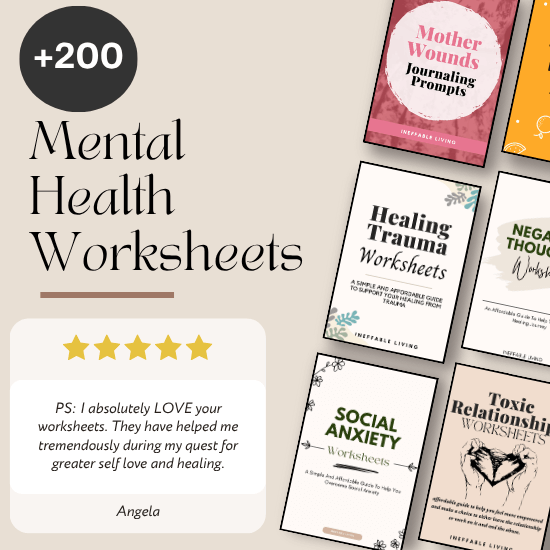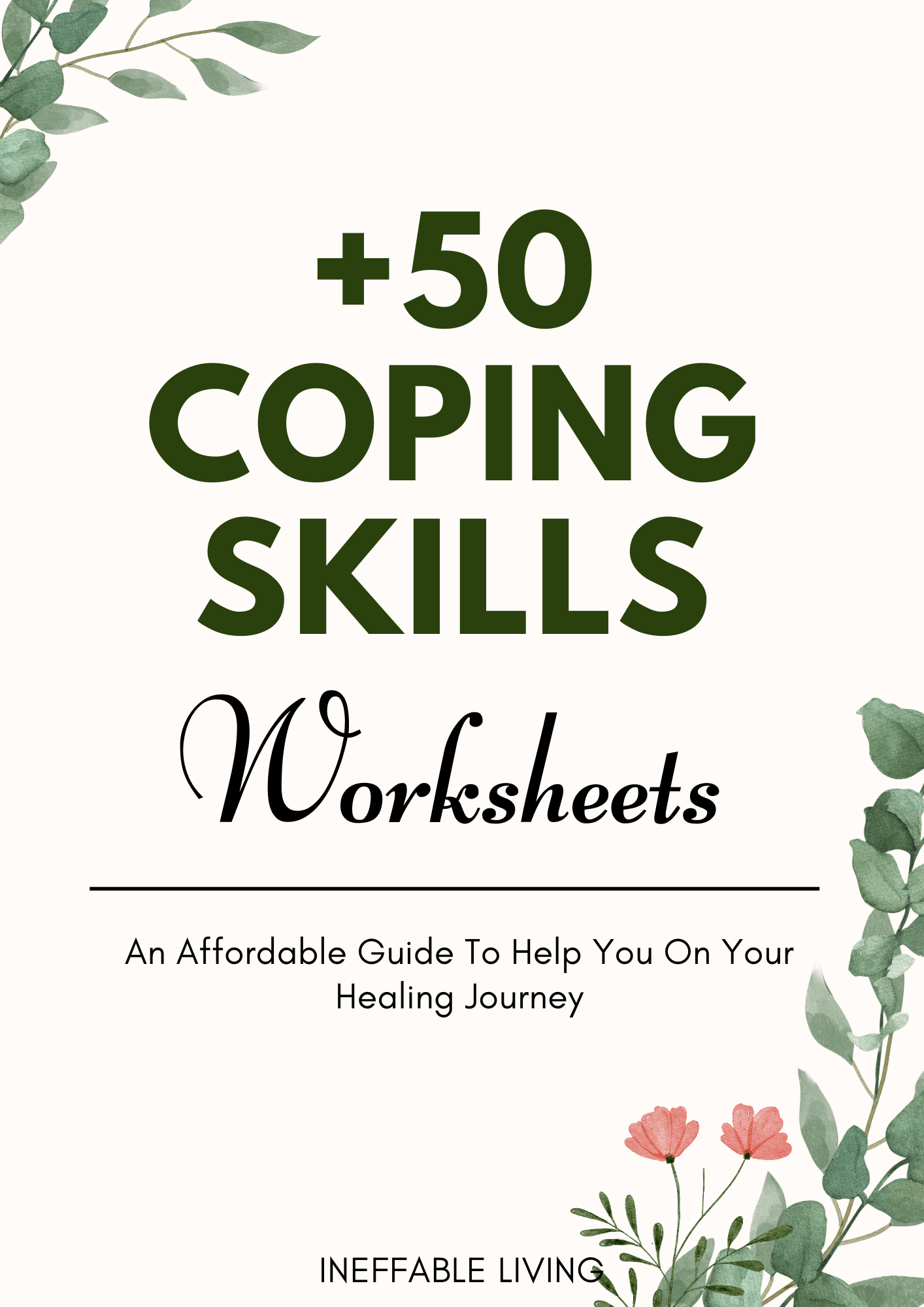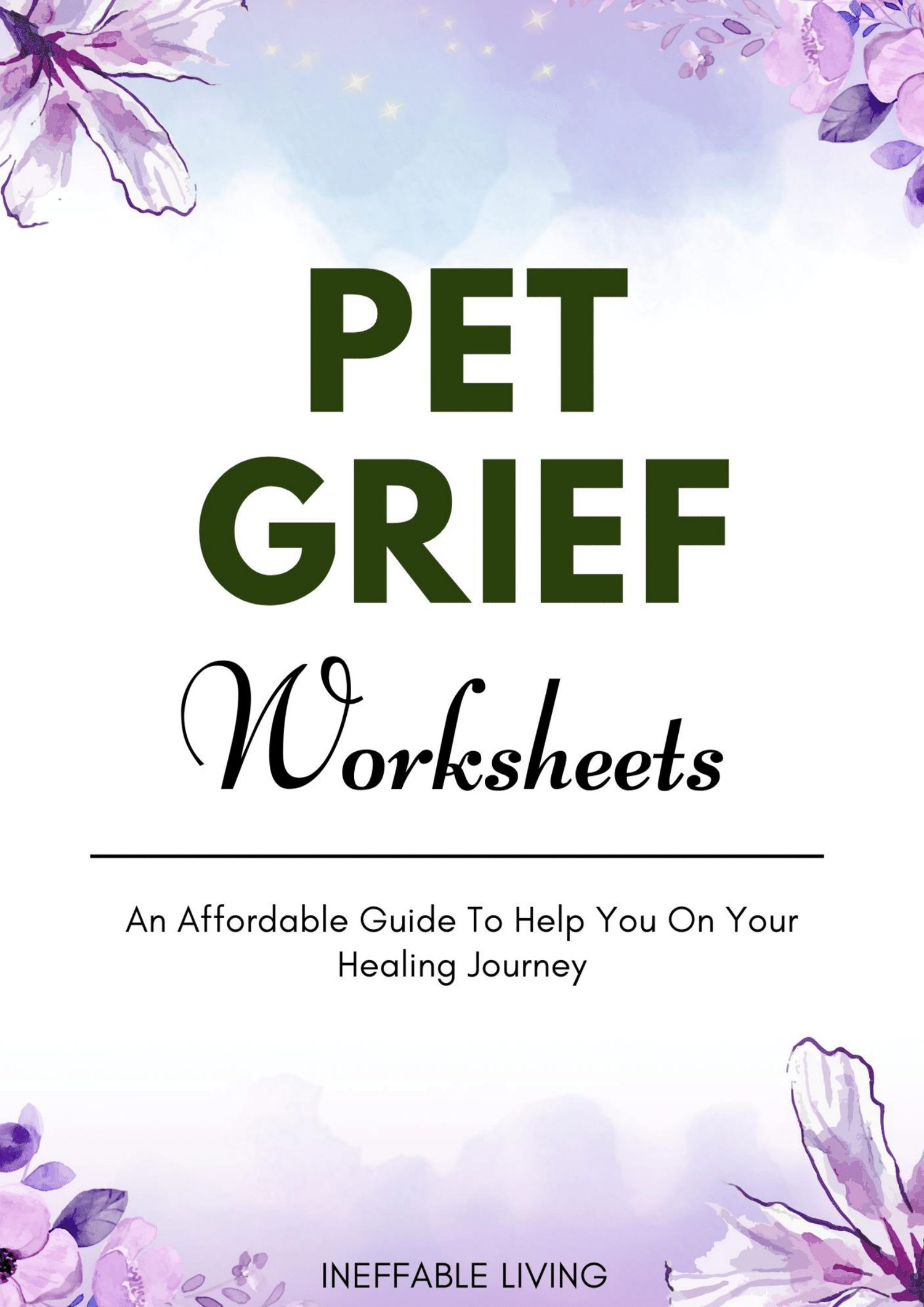Grief doesn’t always look like tears. Sometimes, it’s a blank stare. A heavy fog. A numbness so deep, you wonder if you’ll ever feel anything again. Whether you’ve lost a loved one, a relationship, a dream, or even a part of yourself — the pain can feel too much to name, and too silent to explain.
But you don’t have to navigate grief alone or in chaos. These gentle grief worksheets are here to help you sit with the loss, process what you’re feeling (or not feeling), and begin healing at your own pace.
- Why Grief Feels Numbing, Not Just Sad
- 1. Grief Worksheets
- 2. +50 Coping Skills Worksheets
- 3. Pet Grief Worksheets
- 4. Holiday Grief Worksheets
- 5. Anticipatory Grief Worksheets
- 6. Grieving Worksheets for Teens
- 7. Adult Child Grief Worksheets
- 8. Grieving Your Spouse Worksheets
- 9. Grieving Your Child Worksheets
- 10. Grieving Your Friend Worksheets
- 11. Sibling Grief Worksheets
- 12. Ambiguous Grief Worksheets
- 13. Miscarriage Grief Worksheets
- How Worksheets Help You Feel, Process, and Heal
- This Is For You If…
- You Deserve to Heal — Gently, Fully, and at Your Pace
Why Grief Feels Numbing, Not Just Sad
Grief is more than sadness — it’s a full-body shutdown. You might feel:
- Emotionally flat or disconnected from everything
- Unable to cry, even when you want to
- Guilt for not grieving “the right way”
- Exhaustion, brain fog, or forgetfulness
- Anger, regret, or random emotional outbursts
- A feeling that life is happening without you
This numbness is your brain’s way of protecting you. It’s not wrong — it’s part of the process.
1. Grief Worksheets
Process your loss at your own pace with gentle prompts to help you sit with sorrow, honor your memories, and begin healing.
2. +50 Coping Skills Worksheets
Build emotional resilience with a wide range of calming, grounding, and healthy coping tools you can use when grief feels overwhelming.
3. Pet Grief Worksheets
Honor the loss of your beloved animal companion with space to remember, reflect, and grieve fully without shame.
4. Holiday Grief Worksheets
Navigate grief during the holidays with tools for setting boundaries, creating new traditions, and honoring those who are missing.
5. Anticipatory Grief Worksheets
Find peace while grieving someone who is still alive with exercises to name your feelings, prepare emotionally, and stay present.
6. Grieving Worksheets for Teens
Support teens through loss with age-appropriate reflections, emotional vocabulary tools, and coping strategies tailored to their world.
7. Adult Child Grief Worksheets
Grieve the loss of a parent with compassion-focused pages designed to process complex emotions, memories, and milestones.
8. Grieving Your Spouse Worksheets
Work through the pain of losing a partner with space for deep grief, shared memories, and rebuilding a sense of self.
9. Grieving Your Child Worksheets
A tender space to honor unimaginable loss, hold grief without judgment, and process emotions with care and grace.
10. Grieving Your Friend Worksheets
Navigate the unique pain of losing a friend with prompts for shared experiences, identity shifts, and emotional release.
11. Sibling Grief Worksheets
Process the layered loss of a brother or sister — the shared history, rivalry, and bond — with honesty and care.
12. Ambiguous Grief Worksheets
Make sense of loss without closure — whether it’s due to estrangement, addiction, or disappearance — with tools for naming and healing complex emotions.
13. Miscarriage Grief Worksheets
Honor your loss, hold space for silent sorrow, and gently begin emotional healing after pregnancy loss.
How Worksheets Help You Feel, Process, and Heal
Grief doesn’t follow a clean timeline. It rises in waves, comes without warning, and often leaves you unsure of what to do. That’s where worksheets can help.
They gently guide you to:
- Name what you’ve lost and what it meant to you
- Sit with the feelings that seem too big or too quiet
- Understand complicated grief like regret or relief
- Create space for memories and meaning
- Practice self-compassion instead of self-judgment
- Find new grounding after everything feels uprooted
These worksheets aren’t about “moving on.” They’re about moving through — with grace, honesty, and care.
This Is For You If…
- You feel emotionally numb, stuck, or disconnected
- You’ve lost someone or something and don’t know how to grieve
- You’re tired of holding it all in
- You want to process grief, but not in a way that feels forced
- You’re not ready for therapy yet, but still want support
You don’t need to have the “right” words or feelings. You just need a place to start.
You Deserve to Heal — Gently, Fully, and at Your Pace
Grief is not a sign of weakness. It’s a sign of love. And healing doesn’t mean forgetting — it means learning how to carry the memory without it breaking you.

Read Testimonials –> HERE
FAQs
Can I use the worksheets with my therapy clients?
Absolutely! The worksheets are meant for both, personal and professional use.
The worksheets are copyrighted so you can’t resell them or upload them publicly online. But you can share them with your clients.
Can I make changes to the files before handing them down to my clients?
Absolutely! You can convert your PDF files to word documents and make changes using free tools like pdf2doc.com.
How do I know if these worksheets are right for me?
These worksheets are perfect for anyone who needs an affordable, yet effective strategies to help them increase their self-awareness and work on their own issues – alone or with their therapist.
These worksheets are not a one-size-fits-all approach and are in no way meant to imply that change is as one-dimensional as a worksheet.
So choose the techniques and suggestions that apply to you and tailor the exercises in ways that will be helpful to you.
Can I use these worksheets on my own or should I seek professional guidance?
These worksheets are designed to be helpful on their own. However, seeking professional guidance from a mental health professional can increase their effectiveness.
How do I use mental health worksheets effectively?
1. Set aside dedicated time: Find a quiet and comfortable space where you can focus on yourself without distractions. Treat this as valuable self-care time, just like you would for any other important appointment.
2. Choose the right worksheet: There are numerous worksheets available, each offering unique exercises and prompts. Consider your specific needs and goals. Are you looking to enhance self-awareness, manage stress, or improve your relationships? Select a worksheet that aligns with your current focus.
3. Read instructions carefully: Take a moment to fully understand the purpose and instructions of the worksheet. Clarify any questions you may have before proceeding.
4. Engage in self-reflection: Set pen to paper and let your thoughts flow. Don’t worry about perfection or judgment – this is your private space to express yourself authentically. Be honest with yourself and explore your emotions, thoughts, and experiences without restraint.
5. Reflect on your insights: After completing the worksheet, take some time to reflect on what you have learned about yourself. Consider any patterns or triggers that impact your mental well-being. Identify areas where you can implement positive changes or coping strategies.
6. Incorporate your insights into daily life: The true value of mental health worksheets lies in applying your newfound awareness and insights to your everyday life. Consider how you can integrate these insights into your relationships, self-care routines, and overall well-being.
When should I see a therapist?
These worksheets are designed to help you better understand yourself, your distress, and your difficulties.
You can use it in conjunction with therapy or as a stand-alone guide to manage your distress.
These worksheets can be considered a low-intensity intervention. They’re perfect for those who are struggling with mild to moderate issues.
In mental health, mild to moderate symptoms are those that are severe enough to be distressing to you, but moderate enough that you can still manage most of your daily activities.
If you feel very overwhelmed by any of the exercises in these worksheets, this might be a sign that your symptoms are too severe for you to do the work by yourself.
A therapist will help you at your own pace and provide support and encouragement throughout the process.
Do you have more questions? Check this page –> FAQs












